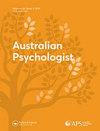评价消极情绪和积极情绪的情绪调节能力:珀斯情绪调节能力量表(PERCI)在美国成年人和伊朗成年人及青少年中的心理测量特征
IF 2
4区 心理学
Q2 PSYCHOLOGY, MULTIDISCIPLINARY
引用次数: 2
摘要
摘要目的成功调节消极和积极情绪的能力是适应心理功能的关键因素。已经开发了各种工具和方法来评估情绪调节能力。最近,开发了珀斯情绪调节能力量表(PERCI),以克服以前评估工具的一些局限性,包括缺乏对积极和消极情绪的情绪调节评估。到目前为止,还没有研究在青少年和非西方普通人群中检验PERCI的心理测量特性。方法为了填补文献中的这一空白,我们对伊朗青少年(n = 557),伊朗成年人(n = 926)和美国成年人(n = 242)。参与者还完成了情绪调节问卷(ERQ)、多伦多述情障碍量表-20(TAS-20)和抑郁焦虑和压力量表-21(DAS-21),以测量PERCI的同时有效性。结果验证性因素分析支持了预期的八因素结构,该结构区分了不同的情绪调节成分以及消极和积极情绪。八因素结构也被发现在性别、年龄和文化群体方面是不变的。此外,PERCI表现出良好的内部一致性、重新测试的可靠性,以及与精神病理学、情绪调节策略和述情障碍指标的预期关联。结论我们的研究结果表明,PERCI在中东和西方样本中都具有很强的心理测量特性,也可用于青少年。关键点关于这个话题已经知道的是:情绪调节的困难有助于多种形式的精神病理学的发展和维持。对情绪调节困难的评估是有限的,因为它主要关注负面情绪。珀斯情绪调节能力量表(PERCI)是最近开发的,旨在对情绪调节能力进行综合和效价敏感的评估。本主题补充道:PERCI可用于测量成人和青少年的情绪调节能力。PERCI的预期八因素结构,区分不同的情绪调节成分以及消极和积极情绪,得到了支持。PERCI的预期因素结构在性别、年龄和文化群体方面是不变的。本文章由计算机程序翻译,如有差异,请以英文原文为准。
Evaluating emotion regulation ability across negative and positive emotions: psychometric properties of the Perth Emotion Regulation Competency Inventory (PERCI) in American adults and Iranian adults and adolescents
ABSTRACT Objective A critical factor for adaptive psychological functioning is the ability to successfully regulate negative and positive emotions. Various tools and methods have been developed to assess emotion regulation competence. Recently, the Perth Emotion Regulation Competency Inventory (PERCI) was developed to overcome some of the limitations of previous assessment tools including a lack of emotion regulation assessment across both positive and negative emotions. To date, no studies have examined the PERCI’s psychometric properties among adolescents and non-Western general populations. Method To address this gap in the literature, we examined the psychometric properties of the PERCI among Iranian adolescents (n = 557), Iranian adults (n = 926), and American adults (n = 242). Participants also completed Emotion Regulation Questionnaire (ERQ), Toronto Alexithymia Scale-20 (TAS-20), and Depression Anxiety and Stress Scale-21 (DASS-21) for measuring the concurrent validity of the PERCI. Results Confirmatory factor analyses supported the intended eight-factor structure that distinguishes between different emotion regulation components and negative and positive emotions. The eight-factor structure was also found invariant in terms of gender, age, and culture groups. Furthermore, the PERCI demonstrated good internal consistency, test-retest reliability, as well as expected associations with measures of psychopathology, emotion regulation strategy, and alexithymia. Conclusions Our findings indicate that the PERCI has strong psychometric properties among both Middle Eastern and Western samples and can also be utilised with adolescents. KEY POINTS What is already known about this topic: Difficulties in emotion regulation are contributing to the development, maintenance of numerous forms of psychopathology. The assessment of emotion regulation difficulties has been limited as it primarily focusd only on negative emotions. The Perth Emotion Regulation Competency Inventory (PERCI) was recently developed to provide an integrated and valence-sensitive assessment of emotion regulation ability. What this topic adds: The PERCI can be used to measure emotion regulation competency in both adults and adolescents. The intended eight-factor structure of the PERCI that distinguishes between different emotion regulations components and negative and positive emotions was supported. The intended factor structure of the PERCI found invariant in terms of gender, age, and culture groups.
求助全文
通过发布文献求助,成功后即可免费获取论文全文。
去求助
来源期刊

Australian Psychologist
PSYCHOLOGY, MULTIDISCIPLINARY-
CiteScore
3.70
自引率
5.30%
发文量
32
期刊介绍:
The Australian Psychologist is the official applied practice and public policy journal of the Australian Psychological Society. As such, the journal solicits articles covering current issues in psychology, the science and practice of psychology, and psychology"s contribution to public policy, with particular emphasis on the Australian context. Periodically, Australian Psychological Society documents, including but not limited to, position papers, reports of the Society, ethics information, surveys of the membership, announcements, and selected award addresses may appear in the journal.
 求助内容:
求助内容: 应助结果提醒方式:
应助结果提醒方式:


